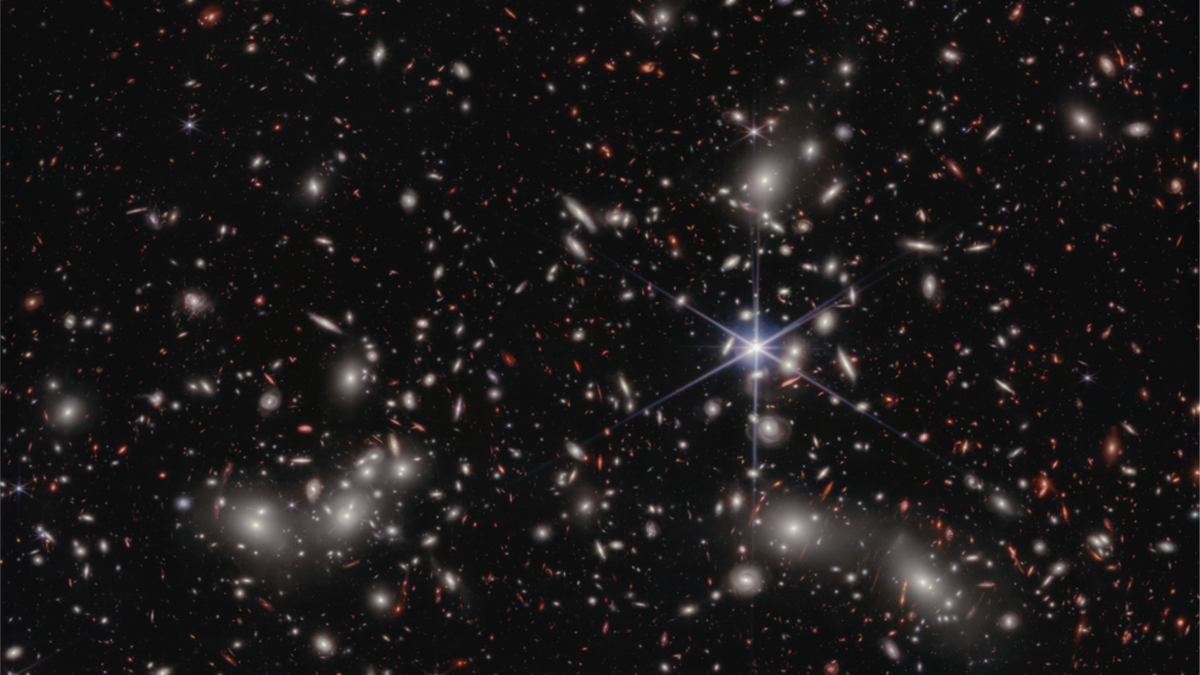Introduction
The universe has always been a vast and mysterious frontier, inspiring generations of scientists to push the boundaries of knowledge. In 2023, the European Space Agency (ESA) launched the Euclid Space Telescope, a groundbreaking mission designed to explore the hidden forces shaping the cosmos. Named after the ancient Greek mathematician Euclid, whose principles of geometry remain fundamental to modern physics, this telescope was specifically engineered to investigate dark matter and dark energy—two of the greatest enigmas in cosmology.
With its advanced observational capabilities, Euclid has already provided astonishing insights into the nature of the universe. From capturing images of 26 million galaxies across 10 billion years of cosmic history to identifying 500 strong gravitational lensing events, the telescope is revolutionizing our understanding of the large-scale structure of the cosmos. This article explores Euclid’s most significant discoveries, highlighting how its data is reshaping astrophysics and cosmology.
Euclid’s Mission and Objectives
The primary goal of the Euclid mission is to map the geometry of the universe and study the role of dark matter and dark energy in cosmic evolution. These two elusive components together account for about 95% of the universe’s total energy content, yet their nature remains largely unknown.
Key Objectives:
Understanding Dark Energy: By observing how galaxies and cosmic structures evolve over time, Euclid helps scientists determine how dark energy influences the expansion of the universe.
Mapping Dark Matter: Euclid uses gravitational lensing techniques to create detailed maps of dark matter distribution across the universe.
Galactic Evolution Studies: The telescope’s deep-field imaging capabilities allow astronomers to track how galaxies form and evolve over billions of years.
Refining the Cosmic Web: By mapping the large-scale structure of the universe, Euclid provides insights into the interconnected web of galaxies shaped by gravity.
Equipped with a 1.2-meter telescope, a visible-light camera (VIS), and a near-infrared spectrometer and photometer (NISP), Euclid has the precision to survey a significant portion of the sky with unparalleled clarity.
Imaging 26 Million Galaxies: A Window into Cosmic History
One of Euclid’s most astonishing achievements so far is its ability to capture high-resolution images of 26 million galaxies. By surveying a vast expanse of the sky, the telescope provides an unprecedented look at how galaxies formed, merged, and evolved over cosmic time.
Galactic Structures and Star Formation
The telescope’s detailed imaging allows scientists to study galaxy morphology and composition in ways never seen before. Early results indicate that star formation rates in young galaxies were significantly higher than previously estimated, providing fresh insights into how galaxies grow and mature.
Observing the Faintest Galaxies
Euclid’s ultra-sensitive cameras enable the detection of faint and distant galaxies, some of which existed just a few hundred million years after the Big Bang. By studying these primordial galaxies, scientists can understand the conditions of the early universe and the role of dark matter in shaping galactic structures.
Galaxy Clustering and Dark Matter Halos
Euclid’s survey data also sheds light on how galaxies are distributed across cosmic structures. Scientists have detected patterns in galaxy clustering that suggest the presence of massive dark matter halos, invisible structures that play a crucial role in galaxy formation.
Gravitational Lensing Observations: Probing the Dark Universe
A major triumph of Euclid’s mission is its detection of 500 strong gravitational lensing events. Gravitational lensing occurs when a massive celestial object, such as a galaxy cluster, bends and magnifies light from distant galaxies behind it. This natural cosmic lensing effect provides invaluable information about dark matter and the large-scale structure of the universe.
Strong Lensing Events
Strong gravitational lensing occurs when light from a distant galaxy is bent so much that it forms multiple images or even Einstein rings. These rare events are crucial for measuring dark matter distribution because they provide direct observational evidence of unseen mass.
Weak Lensing and Cosmic Shear
Euclid also excels in measuring weak gravitational lensing, a more subtle distortion of galaxy shapes caused by large-scale dark matter structures. By mapping these distortions across the universe, scientists can reconstruct dark matter’s distribution and study its influence on cosmic expansion.
Dark Matter Mapping
Using gravitational lensing data, Euclid has produced some of the most detailed maps of dark matter ever created. These maps reveal large, invisible structures that extend across billions of light-years, providing a clearer picture of how dark matter binds galaxies together and shapes the universe.
Euclid and the Cosmic Web: Understanding Large-Scale Structures
The universe is not a random collection of galaxies but a vast, interconnected cosmic web. Euclid’s observations have significantly refined our understanding of this large-scale structure, showing how galaxies are distributed in massive filaments and clusters.
Galactic Superclusters
Euclid has identified several new galactic superclusters—immense gravitationally bound structures consisting of thousands of galaxies. Studying these superclusters helps scientists understand how matter is distributed in the universe and how dark energy influences cosmic expansion.
The Role of Baryonic Matter
By analyzing Euclid’s data, scientists have gained new insights into the relationship between normal (baryonic) matter and dark matter. The telescope has shown that baryonic matter follows the patterns set by dark matter, providing a crucial piece of evidence for our current cosmological models.
Expansion Rate of the Universe
By tracking how galaxies move and interact, Euclid contributes to measuring the Hubble constant—the rate at which the universe expands. This data helps resolve discrepancies between different methods of measuring cosmic expansion, bringing us closer to answering fundamental questions about the nature of dark energy.
Future Implications and the Next Steps
Euclid’s discoveries are just the beginning of a new era in cosmology. As scientists continue to analyze its data, we can expect even more groundbreaking insights into the universe’s composition and evolution.
Collaborations with Other Observatories
Euclid’s mission is complemented by other space telescopes, such as NASA’s James Webb Space Telescope (JWST) and the upcoming Vera C. Rubin Observatory. By combining data from these observatories, scientists can create a more comprehensive picture of the universe.
Further Dark Energy Research
One of Euclid’s long-term goals is to refine our understanding of dark energy. By mapping the way galaxies have expanded over billions of years, scientists hope to determine whether dark energy’s influence is constant or changing over time.
Expanding the Catalog of Exoplanets
While Euclid is primarily designed for cosmology, its deep-field imaging capabilities may also contribute to the discovery of new exoplanets by detecting subtle variations in star brightness caused by planetary transits.
Conclusion: A New Era of Cosmic Exploration
The Euclid Space Telescope is a monumental achievement in astrophysics, providing a new lens through which we can observe the vast and mysterious universe. Its discoveries—from imaging millions of galaxies to mapping dark matter and studying gravitational lensing—are reshaping our understanding of the cosmos.
As Euclid continues its mission, its contributions will undoubtedly pave the way for future discoveries. With each new image and dataset, we are one step closer to answering some of the most profound questions about our universe: What is dark matter? How does dark energy shape cosmic expansion? And what role do these unseen forces play in the fate of the cosmos?
The answers may still be elusive, but with Euclid, we are closer than ever to unlocking the secrets of the universe.


